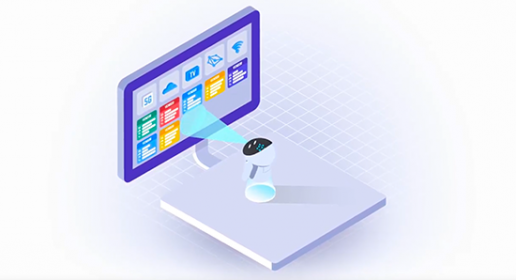The Emergence of Predictive Maintenance 4.0
- Published
- 6 min reading
The concept of predictive maintenance (PdM) is not new. However, given the potential it represents, it is fair to say we are just starting the journey. According to a study conducted by “Research and Markets”, the value of the global predictive maintenance market stood at at $4.45 billion in 2020, and is projected to reach $64.25 billion by 2030, growing at a CAGR of 31% from 2021 to 2030.
What’s driving the predictive maintenance 4.0 boom?
High maintenance and downtime costs (immense in the case of some types of infrastructure), rising prices of spare parts, and challenges faced by the global supply chain - all stimulate the development of predictive maintenance projects and programs.
On the other hand, the costs associated with setting up such a program, a shortage of highly skilled workforce, risks of data misinterpretation or leaks, and, in some cases, too simplistic data and forecast modelling, undermine the early adoption of predictive maintenance.
Nevertheless, the increasing complexity of industrial infrastructure, rising popularity of cloud connectivity, accelerating deployment of 5G and IoT-based technologies, and business demand for safer, more predictable and precise industrial ecosystems, create a growing appetite for predictive maintenance software which will gradually outweigh concerns about risks.
Essentials of Industry 4.0 and predictive maintenance
In 2022 and beyond, we can expect to see a development of different functionalities supporting the boom in predictive maintenance tools, such as:
Anomaly detection and alert management in maintenance 4.0
We should expect solutions that offer more granular and precise sensor data coming from specific components rather than vague information about machine failures. Models will embed environmental monitoring data, which can significantly impact the production ecosystem and processes.
These advances will also open the door to the next generation of predictive maintenance – one that not only relies on condition monitoring, but also employs continuous optimization through machine-learning (ML), artificial intelligence (AI) and multidimensional data.
This will provide new insights about whether a part is broken, why it is broken (root-cause analysis), how it impacts other elements in the industrial ecosystem (what could or is likely to happen in the future).
Machine health index and forecasting
The new generation of predictive maintenance will incorporate elements of probability, along with financial risk management at component level.
Operators will be able to assess potential risks and failures with more precision in terms of which elements should be inspected first. In this way, they can protect their most expensive assets, and optimize their spending.
Field Service Management with assisted video calling, HoloLens, drones and thermal imaging
As the technology evolves, we will see deployment of different productivity tools to support predictive maintenance. In response to detected anomalies and generated alerts, FSM software will be capable of recommending optimum action to solve the problem.
Powered by assisted video calling, QR code reader, thermography and drone console, FSM software can extend the capabilities of technicians, allow them to reach out to distant experts, and send UAVs to unsafe or hard-to-reach areas.
Disruption mitigation
Events such as the pandemic and the on-going climate crisis have seriously affected time-maintenance schedules and caused delays in usual business routines. Such situations result in different types of incidents at production sites, including fires, chemical spills, etc.
The deployment of predictive maintenance-based solutions will provide the necessary balance in the event of workforce shortages, thanks to task prioritization and reduction of factors such as human error.
Role of digital twins in IoT predictive maintenance
Digital twins are among the most exciting opportunities with growing potential. They will serve not only as a virtual representation of the infrastructure, but also as a lab in which to simulate and streamline industrial processes, a model to monitor the performance and efficacy of the infrastructure, and a basis for predictive maintenance.
For single components or complete machines, companies who are able to manage well-curated data and deploy digital twin models properly can save hundreds of thousands of dollars, prolong the longevity of equipment and maximize ROI.
Plug-and-play technology
Unlike heavy legacy systems, which are not equipped with connectivity options, new predictive maintenance solutions give manufacturers easy, out-of-the-box connections for their equipment.
They will no longer require additional installation fees or highly skilled operators.
The simpler, the better.
Not just Maintenance-as-a-Service, but Predictive-Maintenance-as-a-Service
The opportunities that come together with cloud computing and the vast amounts of data that can be processed in the cloud significantly enhance the quality of maintenance services.
Predictive-Maintenance-as-a-Service will embrace a set of services not limited to:
- Detailed statistics and reports on equipment performance
- Forecasts of machine/component lifespan
- Access to interactive content such as videos, guides, VR visualizations/holograms
- Individual insights with equipment-specific maintenance targets
Staying on top of the discussed trends and deploying the appropriate technologies at the right time will provide a competitive advantage and allow businesses to maximize their ROI.
If you’re curious about other technology trend predictions for telecoms and industry, discover our free 2022 predictions e-book here.












